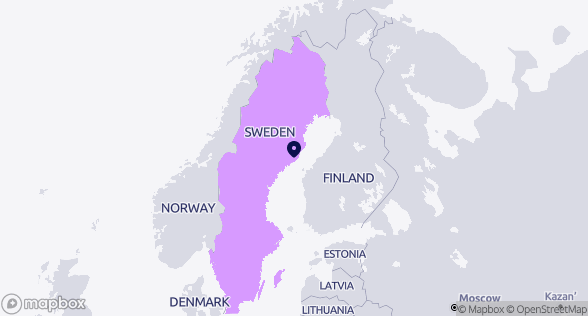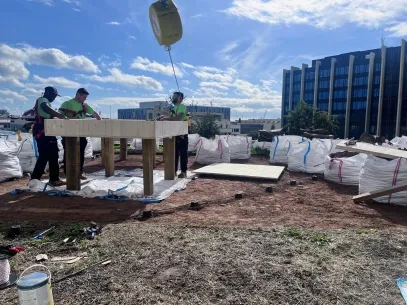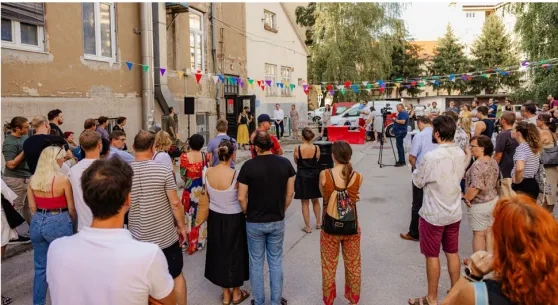
Umea
Sweden
Gendered Landscape - Umeå
With 130,224 inhabitants, Umeå aspires to achieving gender equality in all fields by creating the conditions for women and men to enjoy equal power to shape their own lives and society. This goal permeates all the municipality’s work, and it is important to addressing the just and green transition. Umeå has shown that public urban spaces, services and amenities can make significant and simultaneous contributions to sustainability and gender equality. Its strategy is a leap forward in climate neutrality in that all new sustainable mobility and other urban facilities must consider the different needs of girls and boys and women and men.
By collecting gender-disaggregated data on transport use and perceptions, Umeå learnt that men and women travel in and around the city differently. Based on this data, the city developed a series of affordable mobility initiatives aimed at reducing air pollution and improving quality of life through gender-sensitive planning. This has both encouraged the use of public transport and increased the city’s cyclability and walkability. For example, a climate-smart bus station was transformed to make it safer but also more convenient to use for both users and buses and the Lev pedestrian Tunnel was made more accessible, practical, and safer.
This is a case study as part of an UIA report. You can access all of the project's resources on its project collection page.
2. Umeå and Just and Green Transitions
2.1 What are the implications for Umeå?
At the national level, Sweden has put in place an overarching Gender equality policy to give women and men equal power to shape society and their own lives. The policy has 6 goals: gender-equal division of power and influence, economic gender equality, gender-equal education, gender-equal distribution of unpaid housework and provision of care, gender-equal health, and 'men's violence against women must stop'. The city of Umeå has adapted the same goal.
Since 1989, gender equality officers have worked in the city’s urban planning department. They promote gender equality in the city’s built environment and cooperate with other departments to promote gender equality. In 2008, the Municipality signed the European Charter for Equality of Women and Men in Local Life and as a follow-up designed its own Strategy for gender equality to integrate gender equality in its work. The strategy supports local committees to understand how gender equality works. It also shows how it can be incorporated into the city council’s own activities and how it can inform its goals and indicators. Umeå’s two main goals are to grow sustainably up to a population of 200,000 by 2050 while ensuring that this growth is socially, ecologically, culturally, and economically sustainability. Every decision the city council makes must include an ex-ante gender analysis such that each decision is considered through the lens of the overarching gender equality goal; implementation is followed up to ensure compliance. This approach applies to public transport. The city’s transport strategy is set out in the Comprehensive Plan for Umeå Municipality, which also integrates the city’s SUMP. This strategy seeks to make the city a ‘Five-kilometre city & high-density city,’ equipped with the necessary sustainable mobility infrastructure.
The city’s sustainable mobility policy involves each department with an interest in the topic (e.g. public transport, smart solutions, climate neutrality, and so on) plus the gender equality officers in order to deliver the gendered landscape approach effectively. Dedicated working groups are set up for each new initiative. This holistic approach also incorporates close consultation with residents and co-creation of solutions. Umeå’s Climate-smart choices for sustainable lifestyles report highlights the need to challenge travel habits by encouraging residents to try out alternative forms of transport ‒ with the gender-sensitive approach making the switch more appealing.
Finally, as Umeå has been selected to be one of the 100 Climate Neutral Cities programme, it might further develop its gendered landscape under this programme.
2.2 What barriers has Umeå faced implementing the just and green transitions?
By focusing on gender equality, Umeå is working on an important issue, which has been present conceptually in many other cities but not put into practice. It is a challenging approach. It must consider outreach and consent, it must explain what it really entails and the benefits for society. Umeå took place in a conducive multi-level policy framework which, from top to bottom, pulls in the same direction. It must go beyond theory and deliver concrete solutions, which implies a radical change in perspective from an existing urban planning approach and physical urban design predominantly made for wealthy white men. It implies a need to look through new ‘lenses,’ such as security, safety, practicality of usage (how do women use public transport), location of needs (where do women need public transport), etc. New policy and design skills need to emerge together with open and honest dialogue, with users and providers, as well as with society in general. This agenda also calls for new technologies and techniques, which may need to be developed. If a city wishes to adopt sustainable mobility, it may well need to rethink existing practices radically (new types of infrastructure to make waiting areas safe and comfortable, new approaches to lighting, etc).
3. How does Gendered Landscape project promote the just & green transition?
Through its gendered landscape approach Umeå is also acting to reduce CO2 emissions and clean the air. The idea is that when the design of urban infrastructures and services takes gender differences into consideration, it can more effectively change behaviours. Key to it is an understanding of how gendered power structures affect the way women and men feel about, use, and access the city. This method is also applied to improve the accessibility and inclusion of the existing projects. Umeå has also calculated that if men used public transport as often as women, there would be a significant reduction in CO2 emissions. So the gendered landscape approach is ultimately beneficial for men and women alike. It improves their access to public transport and enables their participation in the green transition.
4. Keys to success
a. Gathering gender-disaggregated data
Understanding how residents use and engage with public spaces, policies and structures is the first step in being able to address behavioural disparities and design better green solutions. A lack of good local data makes this a challenge for cities. So collecting gender-disaggregated data is important for designing public services based on real needs, skills, opportunities for girls and boys & women and men. Data should be collected at an appropriate scale for the project (national, regional, or municipal) and should combine both quantitative and qualitative dimensions.
b. Gender equality officers
Ensuring that gender equality officers have a cross-departmental mission brief is key. The gender equality officers work closely with all city departments and on smart city and sustainable development projects. Their goal is to keep the gender equality perspective alive and at the forefront of thinking.
c. A comprehensive gender-sensitive plan
Umeå Municipality’s comprehensive plan is a holistic and multisectoral strategy to drive change in the city. Cities often have separate plans to address specific challenges, each one adopted by a single city department. For example, a Sustainable Urban Mobility Plan (SUMP) adopted and implemented by the Urban Mobility Department or a Social Cohesion Plan, adopted and implemented by a Social Inclusion Department.
Through its comprehensive plan, Umeå has taken a step towards an integrated urban strategy, which puts all the interrelated ‘pieces’ (the economy, cultural goals (gender), the environment, city planning, etc.) in one place. This gives the city with a sustainability strategy with a strong long-term foundation.
5. Scaling up and replication potential
The Swedish experience is already informing other countries through European projects. Umeå has shared its insights through the Gendered Landscape URBACT Action Planning Network, for example. This involves Trikala in Greece, Barcelona in Spain, La Rochelle in France, Panevėžys in Lithuania, Trikala Greece and Celje in Slovenia.
Umeå’s gendered landscape approach is innovative in seeking to understand how a sustainable mobility project might affect girls, boys, women and men. Its goal is to use this knowledge to help not only design a more attractive, safe city but also reduce carbon emissions and improve liveability for the whole population. Such an approach requires gender-disaggregated data, perseverance over time, and cities should embed them within a long-term planning strategy that is guided by gender equality goals.
Details of the climate-smart bus stations can be found in the H2020 Ruggedised project.
The replication potential of the Gendered Landscape method is self-evident. The benefits may go beyond those described in this case study. Gendered landscapes can improve access to employment, for example.
About this resource
The Urban Innovative Actions (UIA) is a European Union initiative that provided funding to urban areas across Europe to test new and unproven solutions to urban challenges. The initiative had a total ERDF budget of €372 million for 2014-2020.
Similar content






Want to replicate this urban practice in your city?
Apply to an EUI City-to-City Exchange
Connect with a peer city who can bring you solutions and expertise and apply together to receive EUI support
More infos on EUI websiteBrowse existing Innovative Actions looking for Transfer Partners and cities willing to do a City-to-City Exchange looking for peers